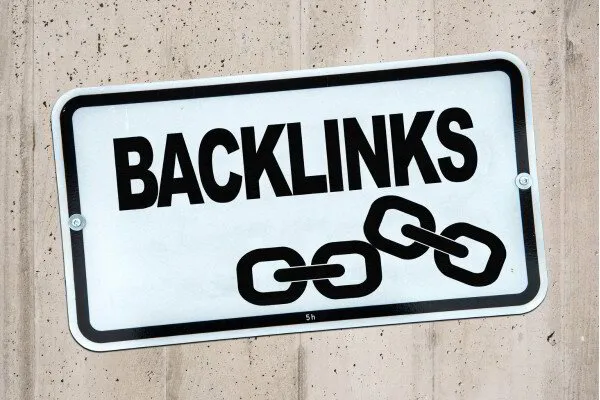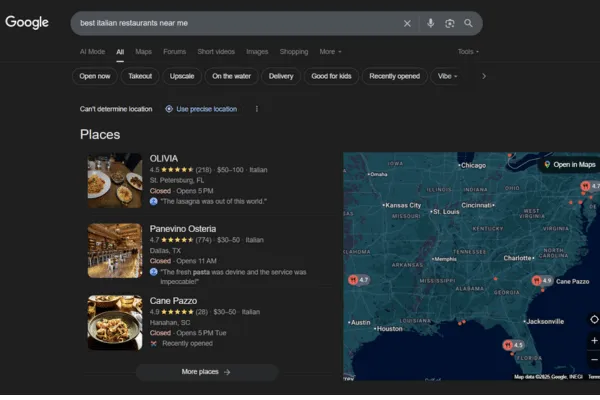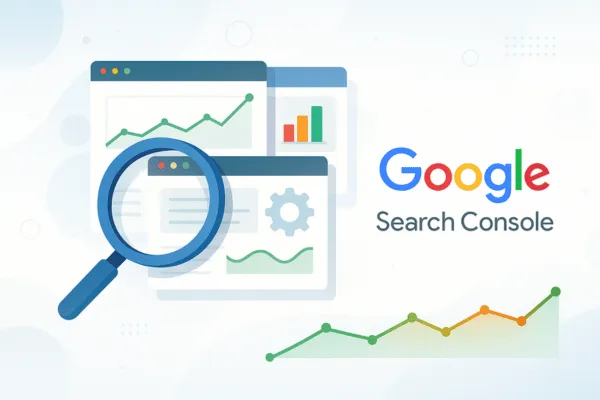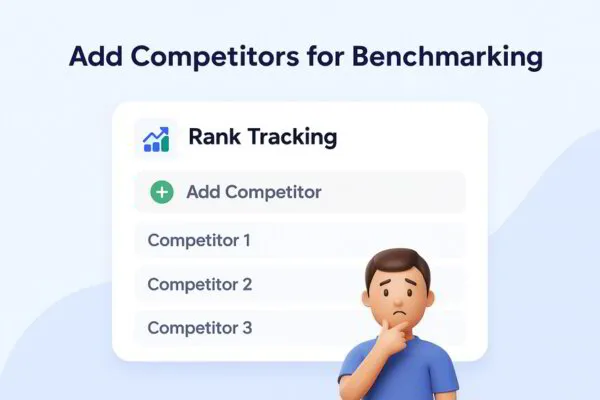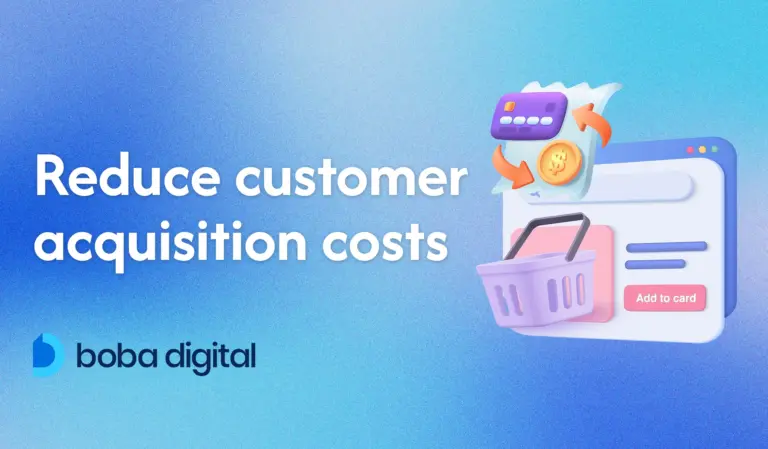How to Track SEO Rankings: A Simple Guide for Beginners
Some websites seem to dominate the top of Google like they own the place, while others barely make it past page ten.
The difference often comes down to how carefully they track their SEO rankings. Checking where your site lands isn’t just for show. It reveals how your keywords perform, what kind of traffic you’re pulling in, and how your overall SEO strategy stacks up.
Watching your search engine results alongside your competitors gives you a clear picture of what’s working and where there’s room to grow.
From fine-tuning keyword positions and meta descriptions to keeping your site’s health strong, tracking helps you spot opportunities before they slip away.
Curious about how to keep your rankings in check and outsmart the competition? Let’s get started and break it all down together, step by step.
Understanding SEO Rankings and Why They Matter
Understanding where your website ranks on search engine results pages is a bit like checking your report card—it tells you how well you’re performing online.
Your SEO ranking reflects how visible your site is when someone searches for a keyword or question related to your business. When your pages appear near the top, you’re far more likely to capture clicks and drive valuable traffic to your site.
Search engines like Google and Bing determine these rankings using a mix of signals. They evaluate the quality of your content, the number and authority of backlinks, how users interact with your pages, and your site’s technical health. In fact, over 200 factors influence where your site lands.
That’s why a fast, mobile-friendly site with clear page titles and strong meta descriptions often performs better—it aligns with both user intent and search engine preferences.
Consider this: the first result on Google typically gets the lion’s share of clicks. Most people don’t scroll far, let alone click to page two. So even small improvements in ranking can lead to significant increases in organic traffic.
For instance, a local bakery that ranks first for “best cupcakes in Chicago” will attract far more visitors than one listed near the bottom of the page.
And it’s not just about ranking high in the traditional blue links anymore. Today, visibility in featured snippets, local map packs, and answer boxes can often drive even more attention—and clicks—than standard results.
That’s why tracking your SEO positions matters. It acts like an early warning system: a sudden drop could indicate content issues, technical problems, or even a change in Google’s algorithm.
Key Metrics to Track for SEO Performance
Organic clicks and traffic
Think SEO is just about publishing content and hoping for the best? Not quite.
If you want real results, you need to track the numbers that matter. And one of the most important metrics? Organic traffic.
Organic traffic tells you how many people are finding your site through organic search results. These visitors are highly valuable—they’re actively searching for something you offer, whether it’s a product, a service, or an answer to a specific question.
With tools like Google Search Console, you can see exactly how many clicks and impressions your site is getting. More importantly, you can pinpoint which keywords and pages are driving that traffic.
Let’s say you run a local flower shop. If your page on wedding arrangements starts getting a flood of clicks from searches like “best wedding bouquets near me,” you know your content is resonating—and your SEO is working.
But this isn’t just about looking backward. Tracking organic traffic helps you spot trends, discover new keyword opportunities, and fine-tune your strategy to stay one step ahead of the competition.
Keyword rankings and position changes
Keyword rankings can be as unpredictable as an actor’s fame—one day you’re at the top, the next you’ve slipped down a few spots. That’s why it’s crucial to keep a close watch on how your keywords are moving in the search results.
Monitoring these position changes helps you stay ahead. You’ll know when something’s starting to slip, so you can fix it before it hurts your traffic. And when a keyword is climbing, you can double down on what’s working and build on that momentum.
Tracking your rankings gives you a clear picture of what’s performing well and what needs improvement. If a high-traffic keyword starts to drop, it could lead to fewer visitors and lost visibility. But when a keyword jumps up, it can bring in more organic clicks and boost your presence in search.
Using a rank tracking tool—or even free options like Google Search Console—lets you zero in on your most important keywords. These should reflect your core focus, match search intent, and align with your overall SEO goals.
When you monitor rankings consistently, you’ll be able to spot chances to refresh content, tweak page titles, or improve meta descriptions—before those ranking shifts start affecting your bottom line.
Backlinks and domain authority
Backlinks remain one of the top three ranking factors for SEO success.
Search engines look at both the quality and quantity of these links to decide where your pages should appear in search results. Tools like Ahrefs and SEMrush make it easier to track who’s linking to you and how strong those connections really are.
By studying your competitor’s backlinks, you can figure out what content is helping them win and which strategies might work for you. This insight can shape your next big content idea or guide your next email outreach plan to score new links.
When analyzing backlinks, focus on:
- Check the total number of backlinks pointing to your website to understand overall reach.
- Review the authority scores (like Domain Rating) of the sites linking back to you to gauge trust.
- Make sure those backlinks are relevant to your industry and align with your core keywords.
A healthy link profile includes diverse, high-quality links that support your site’s authority. The stronger and more varied your referring domains are, the better your website’s SEO performance and rankings on search engine results pages.
Keeping tabs on these metrics helps you protect and grow your domain authority while bringing more valuable traffic to your site.
Conversion rates from organic traffic
Getting tons of traffic to your website feels great, but the real magic happens when those visitors take action.
Whether someone makes a purchase, signs up for your newsletter, or books a consultation, these moments define the true success of your SEO efforts.
Conversions show you how well your organic search traffic translates into real business results. This metric connects your SEO strategy to your bigger goals, revealing the true value behind all those keyword rankings and search engine results page wins.
Most marketers rely on tools like Google Analytics 4 to measure conversions. In GA4, these valuable actions are called “key events,” allowing you to track everything from completed purchases to form submissions.
Setting up these events lets you see exactly how much traffic to your site turns into revenue or leads, helping you fine-tune your SEO strategy for even better results.
When you focus on conversions, you move beyond just driving traffic — you start turning that traffic into loyal customers and measurable growth.
Click-through rates (CTR)
Showing up in search results is one thing. Getting people to actually click is where the real challenge begins. That’s where click-through rate (CTR) comes in.
CTR measures the percentage of users who click on your website link after seeing it in the search engine results page. A higher CTR means your page titles and meta descriptions are doing their job by catching attention and convincing searchers to learn more.
When CTR is low, it’s often a sign that something needs tweaking. Your titles might not match what people are really looking for, or your meta descriptions might not clearly explain the value of your page.
Tracking CTR helps you see which listings are strong and which ones need work, giving you a clear path to improve your website’s SEO performance and attract more engaged visitors.
SERP features and visibility metrics
Reaching the top of the search results is great, but standing out in special spots like featured snippets, local packs, and other highlighted sections can give you a serious edge.
These eye-catching placements grab attention right away and often lead to more clicks than regular links alone.
When your site shows up in these special features, it’s a clear sign that your content is relevant and trusted for a variety of search queries. It also means you’re connecting with different audiences — whether someone is looking for a quick answer, a local business, or a specific service.
To see how your site stacks up, tools like Ahrefs’ Keyword Explorer can show you traffic share by domain, revealing which competitors are getting the most visits and how your keywords perform. This view helps you spot gaps and find new opportunities to boost your reach.
Showing up in these features isn’t just about higher rankings. It’s about being everywhere your audience is looking, which can lead to stronger brand awareness and more valuable traffic to your site.
Local pack rankings (for local businesses)
For local businesses, showing up on the map can make all the difference between an empty store and a steady stream of new customers.
Ranking in the local pack — that small map section you see above regular search results — is one of the most powerful ways to attract people searching nearby.
When someone types in “best coffee shop near me” or “emergency plumber in Chicago,” they’re looking for quick, local solutions. Appearing in these search engine results can drive valuable traffic to your site and get more people through your doors.
Keeping an eye on your local pack rankings means tracking your spot for important keywords in your area. Tools designed for local SEO, along with insights from your Google Business Profile, help you see where you stand and which locations might need more attention.
By focusing on relevant keywords, local search intent, and your overall SEO strategy, you can strengthen your position and connect with more customers right when they’re ready to take action.
Essential Tools for Tracking SEO Rankings
Google Search Console (Free Tool)
When it comes to tracking your SEO rankings, Google Search Console is like having a direct line to Google itself. This free tool is a must-have for anyone serious about measuring SEO performance and keeping an eye on critical SEO metrics.
With Google Search Console, you get a clear look at how your website performs in organic search. You can see exactly which keywords bring people in, track your average position on the search engine results page, and understand how often your pages show up in front of potential visitors.
Here’s what you’ll find most useful:
- Clicks: Shows how many times someone chose your site from the search results, helping you gauge website traffic and user interest.
- Impressions: Reveals how often your pages appear for different search queries, giving insight into overall visibility.
- Average position: This tells you the typical ranking of your pages for specific keywords, making it easier to measure SEO progress over time.
While this tool is powerful, it does have limits, like delayed data updates and less flexibility for deep segmentation.
Still, it’s an essential piece of any SEO strategy and a great place to start improving your website’s SEO performance without extra costs.
Google Analytics for Organic Traffic
Once you know how your site performs in search results, the next big question is what visitors actually do once they land on your pages.
Google Analytics gives you a behind-the-scenes look at user behavior, helping you understand whether all that valuable traffic is turning into real results.
With this tool, you can uncover which pages keep visitors engaged the longest, where they tend to drop off, and what content drives them to explore more. You’ll also learn about the people visiting your site — from their location to their interests — so you can fine-tune your website content and better match search intent.
Even more important, you can see exactly how many conversion goals you’re hitting, whether it’s sign-ups, sales, or contact form submissions.
You’ll also be able to tell which channels, including organic search traffic, contribute most to those wins.
When combined with Google Search Console, Google Analytics paints a complete picture of your website’s SEO performance.
It connects the dots between keyword rankings, user engagement, and overall business growth, helping you measure SEO success in a practical, action-focused way.
SEMrush Rank Tracker
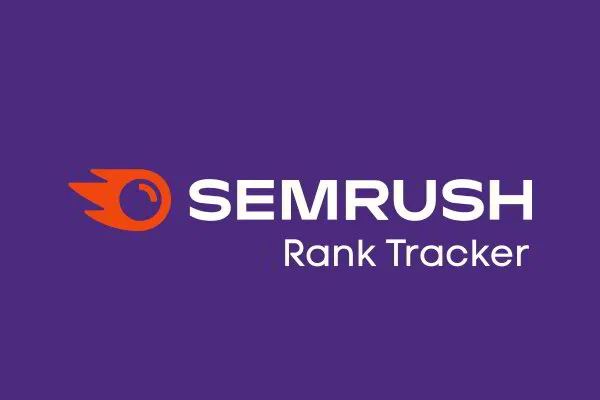
If you’re serious about monitoring your SEO rankings and want more than just basic data, SEMrush Rank Tracker is worth a closer look.
This tool is a favorite among marketers because it gives you daily updates on your keywords, helps you spot ranking positions, and lets you keep tabs on your competitors without breaking a sweat.
SEMrush doesn’t stop at just showing where your keywords stand. You can dive into search volume, track ranking trends over time, and see how your website content stacks up against other websites in your space.
This level of detail helps you adjust your SEO strategy before small issues turn into big problems.
Plans start at $139.95 a month for Pro, $249.95 for Guru, and $499.95 for Business, making it a solid investment for businesses focused on strong SEO performance.
There’s even a free tier, which is handy for smaller websites that need a simple way to start tracking keywords and monitoring search engine rankings.
Ahrefs Rank Tracker
When you want reliable data you can truly trust, Ahrefs Rank Tracker often tops the list. Known for its accuracy and rich detail, this tool goes far beyond basic keyword tracking and gives you a complete view of your website’s SEO performance.
With Ahrefs, you can check exactly where your keywords stand, monitor ranking positions, and dive into detailed backlink analysis. Just drop in your page URL, and you’ll see a breakdown of organic keywords, backlink profiles, and other important SEO metrics — all in one place.
This helps you uncover which pages are driving valuable traffic to your site and where you might need to strengthen your SEO strategy.
Ahrefs offers different plans to fit different needs: $129 per month for Lite, $249 for Standard, $449 for Advanced, and $1499 for Enterprise. While it doesn’t have a free trial, it’s often praised for providing some of the most comprehensive keyword data and link-building insights in the industry.
Using Ahrefs feels less like guesswork and more like having a clear roadmap to improve your keyword rankings, track technical site health, and uncover new opportunities to grow your organic search traffic.
SEO PowerSuite’s Rank Tracker
For anyone who prefers a desktop-based solution and wants to track as many keywords as they like without breaking the bank, SEO PowerSuite’s Rank Tracker is a smart pick.
This tool stands out because it offers deep keyword tracking across multiple search engines and different locations, all from one easy-to-use platform.
You can monitor all your tracked keywords, compare your performance with competitors, and examine technical site health without the hefty price tag that often comes with other tools.
SEO PowerSuite offers a free version to get you started, while the Professional plan runs $349 per year, and the Enterprise option costs $599 per year.
These plans make it a solid choice for teams focused on a serious SEO strategy without the recurring monthly costs.
SERPWatcher by Mangools
If you’re looking for a tool that simplifies tasks while still delivering powerful insights, SERPWatcher by Mangools is a solid choice.
Designed for marketers and business owners who want to keep an eye on their SEO rankings without the overwhelm, this tool makes it easy to see exactly how your keywords are performing day by day.
SERPWatcher provides a clear look at search visibility trends, ranking distribution, and detailed keyword performance reports — all without a steep learning curve.
Its user-friendly interface is one of its biggest strengths, making it perfect for beginners or small teams who want to focus on ranking positions and search engine results without wading through endless data.
Budget-wise, it’s also one of the more affordable options out there. Plans start at $19.43 per month for Basic, $29.19 for Premium, and $58.44 for Agency. This makes it a great fit for individuals or smaller businesses looking to monitor their SEO strategy and measure SEO performance without big upfront costs.
Choosing SERPWatcher means you can easily track SEO rankings, spot opportunities, and keep your keyword positions on the rise — all in a straightforward and stress-free way.
API Tools (e.g., SerpAPI, DataForSEO)
These advanced options aren’t your typical plug-and-play rank trackers — they’re built for marketers, developers, and agencies that need complete control and large-scale data handling.
With these tools, you can build custom dashboards, automate keyword rankings checks, and track SEO metrics across thousands of keywords and multiple projects at once.
This level of automation means you spend less time clicking through reports and more time fine-tuning your SEO strategy and finding new ways to boost website traffic.
Pricing is flexible and typically depends on how much data you need to process, making it a practical choice for larger teams or enterprises managing complex SEO campaigns.
Whether measuring SEO performance for a single brand or juggling multiple client accounts, these API solutions help you stay on top of search engine rankings and spot new opportunities quickly.
How to Set Up and Track SEO Rankings
Step 1: Choose the Right Rank Tracking Tool
Start by thinking about your goals.
Are you aiming to boost locaL search engine rankings and bring in nearby customers, or do you need to monitor keyword positions on a national or global level? Do you need simple keyword tracking, or would you benefit from extra features like competitor analysis and technical site health monitoring?
Your budget and the size of your site also matter. Smaller businesses might get plenty of value from a basic or free tool, while larger teams often need daily updates and detailed SEO metrics to keep their strategies sharp.
For most companies, real-time keyword rankings and insights into what competitors are doing are must-haves to stay ahead in the game.
Let’s say you choose Ahrefs Rank Tracker. With this option, you can keep tabs on keyword data, track SEO progress, and check how your pages perform against other websites — all with clear, easy-to-understand reports.
Step 2: Set Up Your Project
After picking your rank tracking tool, it’s time to build out your project details so you get the most accurate insights possible.
Begin by entering your website domain and deciding which parts of your site you want to track. Some businesses focus on their main pages, while others include specific service pages or blog posts that drive organic search traffic.
Next, choose the locations you care about most.
For local SEO, narrowing your focus down to the city or ZIP code level makes a big difference. It helps you understand how your business shows up in local search engine results and if your keywords connect with people nearby.
It’s also smart to separate tracking for desktop and mobile.
Search behavior can vary greatly between devices, so knowing how your pages perform on each helps improve your SEO strategy and your website’s overall SEO performance.
Step 3: Select and Add Keywords
Picking the right keywords is one of the most important steps when setting up your SEO tracking — it’s where strategy really starts to take shape. Instead of simply listing words randomly, think strategically about how people search for your services or products.
Start with the obvious terms tied to what you offer.
Then, expand your list by using tools like Google Keyword Planner or keyword explorer tools to uncover related phrases and hidden opportunities. These tools provide keyword data, including search volume and trends, so you’re not guessing what might work.
Next, look beyond popularity alone.
While high-volume keywords can seem tempting, consider keywords with strong intent and a clear connection to your business goals. Long-tail keywords often attract visitors who are further along in the buying journey and ready to take action.
Review where you currently rank for each keyword and compare it against your competitors. Checking metrics like average position and click-through rate helps you understand which keywords are delivering results and which need more work.
For better tracking and insights, group your keywords in a way that makes sense — by topics, funnel stages, or specific landing pages. This approach gives you a clearer picture of your SEO performance and helps you align your website content to match search intent more precisely.
Step 4: Add Competitors for Benchmarking
After setting up your keywords, the next smart move is to understand who else is fighting for the same search traffic.
Adding competitors to your tracking system gives you a clear view of where you stand and reveals chances to outperform them.
Pinpointing businesses that appear in search engine results for your most important keywords. These might not always be big industry giants but smaller sites that consistently show up alongside yours.
Take note of who shows up in both organic search and SERP features like local packs or featured snippets.
Once added to your rank tracking tool, you can compare keyword positions, track SEO progress, and uncover which search terms are helping them attract valuable traffic to their site.
Seeing your data next to a competitor’s makes it easier to identify strengths and weaknesses. You might find that while your site performs well for broad keywords, you’re missing out on local SEO opportunities or long-tail keywords with high intent.
Benchmarking against competitors isn’t about copying what they do. It’s about learning from their successes and mistakes so you can refine your SEO strategy, improve your website’s SEO performance, and keep winning over more site visitors in the long run.
Step 5: Schedule Regular Rank Checks
Tracking rankings once and forgetting about them is like checking the weather once a month — it just doesn’t work. Consistent monitoring is key if you want to keep your SEO strategy strong and stay ahead of any surprises.
Checking positions daily or at least weekly is a smart move for your most important keywords.
This helps you catch small shifts early, see the impact of your SEO efforts, and react before traffic or conversions take a hit. For a wider group of keywords, a monthly review usually works well and gives you a big-picture view of your overall SEO performance.
Most rank tracking tools make this easy with automated schedules and customizable dashboards.
You can even set up alerts to get notified if a keyword suddenly jumps or drops in the search engine results page. These quick updates save time and make sure you never miss important changes.
Step 6: Analyze and Interpret Ranking Data
Look closely at individual keywords first.
Check which ones are moving up steadily and which are slipping. A decline might suggest stronger competitors targeting the same search intent, a technical issue affecting your site health, or even changes in the search engine results page layout.
When keywords perform better, it’s a strong sign that your content, on-page optimizations, and link-building efforts are moving in the right direction.
Beyond individual terms, pay attention to your overall search visibility. This bigger view shows whether your website is gaining or losing ground across all your tracked keywords.
Reports from tools like Google Search Console and Ahrefs provide extra details, including changes in click-through rates, average position, and how much traffic to your site comes from each keyword.
These important SEO metrics highlight what’s working and reveal where there’s room to improve.
Combining keyword-level insights with a broader look at visibility lets you make informed decisions that keep your website content strong and your SEO strategy moving forward.
Step 7: Take Action Based on Insights
When you see a keyword slipping, it might be time to refresh your website content or adjust your page titles and meta descriptions to better match search intent.
If a page is on the rise, consider adding more internal links or updating it to capture even more valuable traffic.
Spotting opportunities in SERP features? You could optimize for featured snippets or improve your Google Business Profile to boost local pack rankings. Technical issues like broken links or slow page speeds can also drag rankings down, so use this moment to fix site health and strengthen your foundation.
It’s also crucial to connect ranking changes to real-world outcomes. More visibility should translate into higher conversion rates, new leads, or more sales, not just a prettier report.
Tying keyword movements and search engine results to business impact makes your SEO efforts more meaningful and ensures every update supports growth.
This action-focused mindset turns rank tracking from a passive habit into a powerful tool for ongoing success.
Best Practices for SEO Ranking Tracking
Tracking your SEO rankings is more than checking a list of numbers — it’s about turning those numbers into a clear plan for growth. To make the most out of your efforts, consider these advanced tips:
- Break down your data by device type, location, and keyword category. This helps you understand how your SEO performance shifts across different search intents and user behaviors.
- Keep an eye on both keyword rankings and SERP features. Knowing where your website content appears in featured snippets, local packs, or other search engine results page elements gives a more complete picture of your search visibility.
- Refresh and expand your keyword list regularly. As your business evolves and new trends pop up, updating your tracked keywords ensures you stay focused on the most valuable traffic opportunities.
- Combine ranking data with website analytics and conversion metrics. This blended approach shows you not just where you rank but also how those positions impact traffic to your site and overall business goals.
- Look at long-term ranking trends instead of getting stuck on daily ups and downs. Historical data reveals true performance patterns and helps you avoid making rushed changes based on short-term shifts.
- Automate reports and alerts when possible. Especially for larger teams or agencies, automated updates save time and keep everyone informed about important changes without extra manual work.
Using these best practices helps you measure SEO performance more effectively, refine your SEO strategy, and turn keyword data into real business growth.
Conclusion
Think of tracking your SEO rankings as checking your pulse before a big race.
It keeps your strategy alive, healthy, and ready to outpace the competition. By keeping tabs on keyword data, monitoring key metrics, and making smart moves based on those insights, you’re not just surviving online — you’re thriving.
Following these steps means you’re set up for higher search visibility, more valuable traffic, and stronger business results.
Rank tracking isn’t just some optional extra on your marketing checklist; it’s the fuel that keeps your SEO engine running smoothly for the long haul.
Ready to stop worrying about SEO and start seeing real results? Let Boba Digital handle the heavy lifting while you focus on growing your business. Get in touch with us today.
FAQs
What is the most important metric to track for SEO rankings?
While there’s no single “magic” metric, keyword positions are often the first place to look since they directly show how your pages rank on the search engine results page. However, pairing this with click-through rate, organic traffic, and conversion data gives you a better picture of overall SEO performance. Focusing on just one number can be misleading — the real value lies in understanding how these metrics work together to drive business results.
Do I need to pay for rank tracking tools?
You don’t have to, but investing in a paid tool can make a big difference. Free options like Google Search Console provide solid baseline data, but they can lack features like competitor tracking, daily updates, and advanced keyword analysis. Paid tools offer deeper insights and help automate reporting, saving time and boosting accuracy. If SEO is a big part of your growth strategy, paid rank trackers are usually worth it for the extra clarity they bring.
What should I do if my rankings drop suddenly?
First, don’t panic! Sudden drops can happen for many reasons, including algorithm updates, technical site issues, or stronger moves by competitors. Start by checking your site health, including broken links and page speed. Review recent content changes or backlink losses. Also, compare your keywords to see if search intent has shifted. Once you find the cause, adjust your SEO strategy accordingly. Staying proactive and monitoring your SEO metrics regularly helps catch and fix these dips faster.
What’s the difference between tracking rankings and tracking organic traffic?
Tracking rankings focuses on where your keywords appear on search engine results pages, showing your visibility. On the other hand, tracking organic traffic looks at how many people actually visit your site from those rankings. You might rank high for a term, but if no one clicks, it won’t help your business. Combining both metrics is key — rankings tell you where you stand, and organic traffic shows if that position brings real visitors and value.



